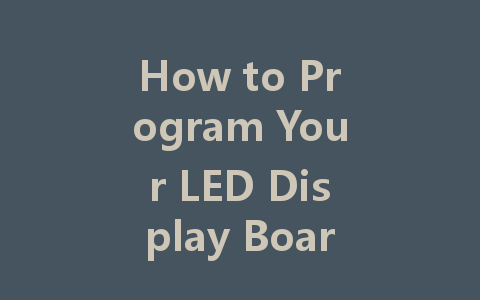
LED display boards have become an essential tool for businesses, events, and even personal use. They are versatile and allow for dynamic messaging that can capture attention and convey information effectively. However, for those who are new to this technology, programming an LED display board may seem daunting. In this article, we’ll break down the process into simple steps to help you get started.
Understanding Your LED Display Board
Before diving into programming, it’s important to understand the basics of your LED display board. These boards can come in various sizes, styles, and functionalities, ranging from simple static messages to complex, animated advertisements. Familiarize yourself with the following key components:
Step 1: Install the Necessary Software
The first step in programming your LED board is to install the appropriate software. Typically, manufacturers provide proprietary software that is specifically designed for their boards. Here’s how to do it:
Step 2: Connect Your Computer to the LED Display
Next, you need to connect your computer to your LED display board. This step varies depending on the connection type:
Testing the Connection
After connecting your device, perform a quick test to verify that the software can communicate with your LED display. This may involve sending a test message or changing a setting. If you don’t see a response, double-check the connections and settings.
Step 3: Create Your Content
With the board connected and the software running, it’s time to create your content. The software usually offers several options to customize:
Step 4: Schedule Your Content
Many LED display boards offer scheduling functionality, enabling you to change the content at predefined times. Here’s how to set up a schedule:
Step 5: Upload Your Content to the Display Board
Once you’ve created and scheduled your content, the final step is to upload it to your LED display. Here’s how:
Common Troubleshooting Tips
Sometimes, even seasoned users may run into issues when programming an LED display. Here are a few common problems and solutions:
Conclusion
Programming an LED display board can seem intimidating at first, but by following these straightforward steps, you can easily create compelling displays that communicate effectively. Whether for advertising, event announcements, or personal projects, your LED display board can be a powerful tool to engage your audience. By familiarizing yourself with the necessary software and taking the time to create and upload engaging content, you’ll be well on your way to making the most of this technology. Happy programming!